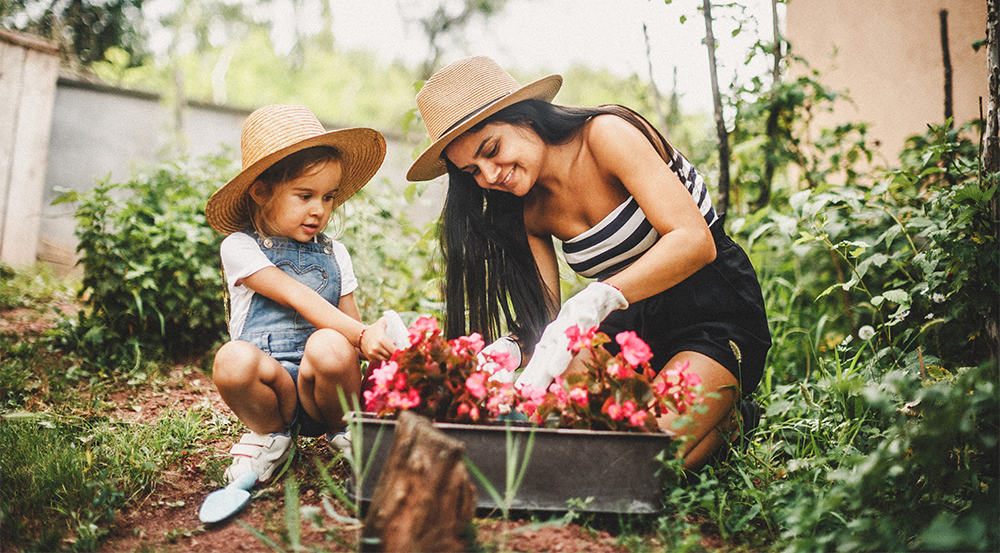Is that a hint of spring in the air? After a long wet winter, warmer days are finally on the way. Get ready for weekends in the garden, picking fresh produce from the veggie patch and enjoying the newly sprung flowers.
The best spring gardens are created in the colder months. While it’s still cool and damp, take time to get your garden springtime ready.
1. Prune back shrubs and trees
Plants go dormant when it’s cold, making this the ideal time to get pruning. Use sharp secateurs or pruning shears to cut back old growth and encourage new buds and shoots for spring.
Some plants need more pruning than others. Young plants should generally only be lightly pruned, removing any dad or weak growth and removing tips to encourage further blooms. Older plants, especially woody plants like climbing roses, will respond well to a more severe prune.
Evergreen trees should be left alone, while deciduous trees are taken on a case by case basis. If you’re lucky enough to have fruit trees, removing weaker growths can help the tree preserve its energy and produce more fruit later in the year. It’s a good idea to prune established citrus to avoid a situation where the weight of the fruit causes breakage.
Once you’ve pruned, spray deciduous trees and shrubs with a soppy-based spray to prevent pest and disease.
2. Get planting
Late winter and early spring is prime planting season. The important thing is to wait until any frosts have thawed and your soil has a little warmth in it. People in colder climes such as Tasmania or the ACT may need to wait until spring has properly sprung, while those in Queensland can plant much earlier.
Plant root vegetables like potato, parsnip or carrots; leafy greens including spinach, kale and lettuce; salad vegetables including radish, red onion, cucumbers, peas and beans.
Tomatoes, eggplant and corn all need several hours of sunshine per day, so are better left until September or October. Check the guide on your seed labels and ask local garden nurseries for advice if you’re not sure.
This is also a great time to plant flowers for a spring or summer display. Get cheap and cheerful with pansies, nasturtiums, petunias and other bright blooms; as a bonus, many of these will attract beneficial pollinators to your garden and help with the harvest.
3. Feed the soil
Just like a child, gardens grow best with good nutrition. Take the opportunity to feed your soil while new growth is still dormant.
Focus on vegetable beds and flower beds, since these are the areas of your garden that need the most attention. Dig in as much broken-down manure and compost as you can, with a sprinkle of organic fertiliser or blood & bone. Finish the job with a thick layer of mulch to preserve the moisture in your new bed.
If your soil is clayey in texture, organic matter such as compost or leaf mould will help aerate it and improve drainage. Don’t add sand: this was a popular technique in the past, but you risk turning your garden beds into compost. Soil should end up rather like the texture of chocolate cake: rich, moist but crumbly in your palm.
4. Pamper your lawn
Is your grass looking bare or yellow? Lawns need some love too!
Use a hollow core aerator to aerate the top soil, encourage drainage and promote root growth for your lawn grass. Once aerated, you can top-dress by raking or brushing lawn soil into the existing soil. This will further help with soil structure and drainage.
Use fresh grass seed to fill in any bare patches and thicken the grass. Grass seed is not frost tolerant, so it’s important to wait until winter has passed by. Once established, it’s hardier and can withstand future frost.
5. Tidy up
Winter can take its toll on the way your garden looks. Wooden fences, gates and trellis can take a beating in the winter rain. If you have sagging timbers and peeling paint, this is the perfect time to spruce things up. A fresh coat of outdoor paint can extend the life of your fencing considerably and add a bright new look to your spring garden.
Rake any leaves that have survived the winter slush, sweep paths and remove any fallen branches.
Clear out the garden shed ready for use for the new gardening season. Oil and sharpen garden implements and check if your lawn mower needs servicing. Spring is when the grass needs mowing the most, so start off in the best shape possible.
Once you’ve done the hard work, all that’s left is to set out your sun lounger and enjoy the beautiful spring sunshine in peace.
